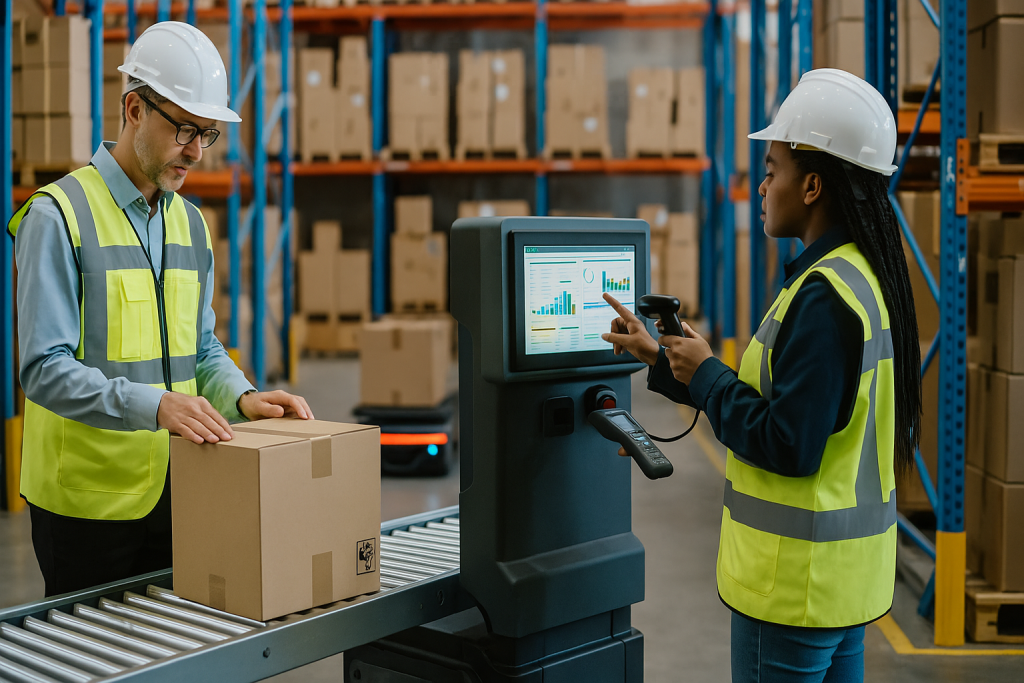By Martin Vassilev / 19 Sep, 2025
In today’s hyper-competitive marketplace, businesses across Canada and the U.S. are under immense pressure to optimize operations, reduce costs, and deliver on customer expectations faster than ever before. One of the most critical yet often overlooked factors in this process is inventory accuracy. Without precise tracking and management of stock, companies risk overstocking, stockouts, and fulfillment errors that directly erode profits and customer trust.
Smart warehousing technologies—powered by automation, artificial intelligence (AI), data analytics, and Internet of Things (IoT)—are transforming how businesses approach inventory management. These innovations provide real-time visibility, minimize human error, and ensure higher levels of efficiency and accuracy.
When businesses rely on outdated manual methods, the risks are substantial. Studies show that inaccurate inventory can increase carrying costs by as much as 30% and lead to customer churn due to unfulfilled orders. For both Canadian retailers and U.S. manufacturers, these issues can cause millions in annual losses.
Beyond financial implications, inaccurate stock data disrupts forecasting, procurement planning, and fulfillment. According to the U.S. Small Business Administration, inventory errors are among the top reasons for operational inefficiencies in small-to-medium enterprises.
Automation eliminates repetitive, error-prone tasks such as manual scanning or paper-based stock tracking. Automated storage and retrieval systems (AS/RS) use robotics to place and retrieve items with near-perfect precision. This dramatically reduces the margin of error compared to human handling.
For example, as highlighted in The Future of Warehouse Automation, companies that integrate robotics into their warehouses can increase inventory accuracy rates from 85% to over 99%.
Artificial intelligence helps businesses move from reactive to predictive inventory management. By analyzing historical demand patterns, AI can forecast when stock will need replenishment, reducing overstocking and shortages. Canadian e-commerce firms have particularly benefited by combining AI with real-time analytics to improve fulfillment accuracy.
Learn more about AI’s transformative power in logistics through How AI Is Transforming the Logistics Industry in 2025.
IoT-enabled sensors and RFID tags provide businesses with constant visibility into stock levels. Unlike barcodes, which require manual scanning, RFID automates the process, instantly updating systems as items move within the warehouse.
This real-time visibility allows managers to spot discrepancies before they escalate into costly errors. Real-Time Inventory Updates show how these innovations enhance supply chain reliability.
Modern WMS platforms integrate with ERP and CRM systems, creating a unified digital ecosystem for managing inventory. A WMS can optimize picking routes, manage stock rotation, and provide detailed reporting on stock accuracy.
Robotics-powered picking solutions reduce the risk of human error during order fulfillment. Collaborative robots (“cobots”) can work alongside human staff to handle repetitive tasks, ensuring higher accuracy and freeing employees for higher-value work.
Blockchain technology enhances supply chain transparency by creating immutable records of inventory transactions. This ensures that every movement of goods is tracked and verified, reducing fraud and error. Learn more from The Impact of Blockchain Technology on Logistics.
Accurate data enables businesses to anticipate seasonal spikes and avoid both stockouts and overstock situations. For example, U.S. retailers preparing for Black Friday can use AI-powered systems to predict SKU-level demand with higher accuracy.
Carrying excess inventory ties up working capital and storage space. By leveraging smart warehousing solutions, Canadian businesses reduce carrying costs and free up cash flow for reinvestment.
Accurate orders delivered on time directly impact customer loyalty. Studies show that 69% of consumers will switch to competitors after two or more delivery failures. By minimizing picking errors, smart warehousing helps companies exceed customer expectations.
Businesses in sectors such as pharmaceuticals and food distribution must comply with strict traceability regulations. Real-time tracking and blockchain enhance compliance with U.S. FDA requirements and Canadian Food Inspection Agency (CFIA) standards, ensuring product safety and legal adherence.

Canadian e-commerce brands rely on smart fulfillment centers to track thousands of SKUs. RFID-enabled systems ensure that when a customer orders a product online, the system instantly checks real-time availability and assigns fulfillment tasks seamlessly.
U.S. manufacturers use IoT-enabled sensors to monitor raw material levels, automatically triggering purchase orders when stock falls below thresholds. This prevents costly production halts and ensures lean inventory operations.
Third-party logistics providers in both countries are adopting smart warehousing to deliver higher service accuracy to their clients. By leveraging AI and automation, they not only improve accuracy but also create competitive differentiation in a crowded market. See insights in Comprehensive Warehousing Solutions.
Smart warehousing technologies require significant capital investment. Small and medium-sized enterprises (SMEs) in Canada often hesitate due to limited budgets, though the long-term ROI typically justifies the investment.
Many U.S. businesses still operate on outdated warehouse systems. Integrating modern WMS or IoT solutions with legacy platforms can be challenging without expert support.
Transitioning to smart systems requires staff retraining. Without proper change management, employees may resist adopting new technologies, undermining overall efficiency.
Adopt Incrementally: Start with scalable solutions such as RFID before moving to robotics and AI.
Integrate Analytics: Use advanced analytics to drive decision-making, not just reporting.
Leverage Partnerships: Partnering with experienced providers can ease the transition. See Guide to Choosing the Right Fulfillment Partner.
Focus on Change Management: Train staff and create a culture of digital adoption.
Measure KPIs: Monitor inventory accuracy, order cycle times, and fulfillment error rates to ensure continuous improvement.
Looking ahead, Canadian and U.S. businesses will continue to adopt AI-driven forecasting, robotics automation, and real-time digital twins of warehouses. These digital replicas allow managers to simulate inventory movements, test strategies, and proactively address potential disruptions.
Governments are also supporting digital transformation through grants and tax incentives, encouraging businesses to modernize. For instance, the Government of Canada’s innovation funding programs and the U.S. Department of Commerce’s supply chain initiatives promote digital adoption in logistics.
Smart warehousing is no longer optional; it is a strategic necessity. The businesses that embrace these innovations will lead in cost savings, customer satisfaction, and market competitiveness.
Canadian and U.S. businesses that prioritize inventory accuracy through smart warehousing gain a decisive advantage in today’s fast-moving economy. By embracing technologies like automation, AI, real-time tracking, and blockchain, companies can dramatically reduce errors, enhance efficiency, and delight customers with consistent, reliable fulfillment.
Those who delay adoption risk being left behind in an increasingly data-driven supply chain ecosystem.

“Thanks to Byexpress all my shipping and fulfillment costs are in line now”

“All my issues were solved by Byexpress team that I had with pervious 3pl provider.”

“Thank you Byexpress team could not done it without you guys.”

“Their integration and customer service were the key for me”

“Outstanding delivery service! The package was well-packaged, and
the delivery team was professional and courteous”

“Great and knowledgeable team to work with.”

Thanks, guys, for reducing my shipping rates
Ottawa Office
2411 Holly Lane
Ottawa, ON, K1V 7P2
Toronto Office
13-280 West Beaver Creek Road Unit #136
Richmond Hill, ON, L4B 3Z1
Alexandria Office
173 Kenyon Street West
Alexandria, ON, K0C 1A0
Montreal Office
4388 Saint-Denis Street Unit #200
Montreal, QC, H2J 2L1
California Office
155 North Riverview Drive
Anaheim Hills, CA, 92808
Call Us
Toll-Free: 1-866-744-7122
Local : 613-739-3000
Email Us
Multilingual Services










